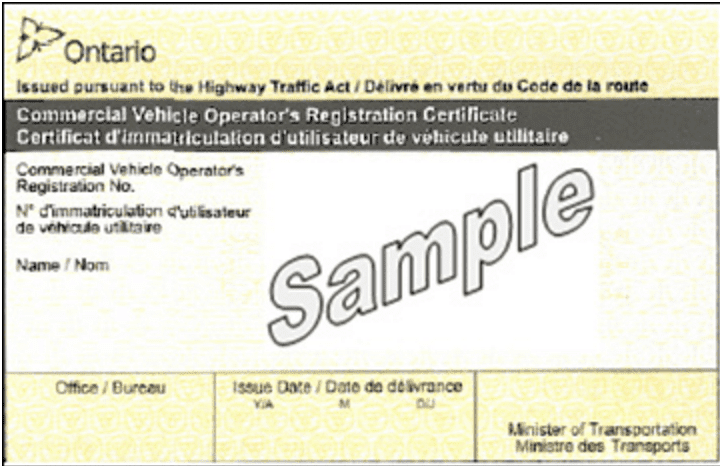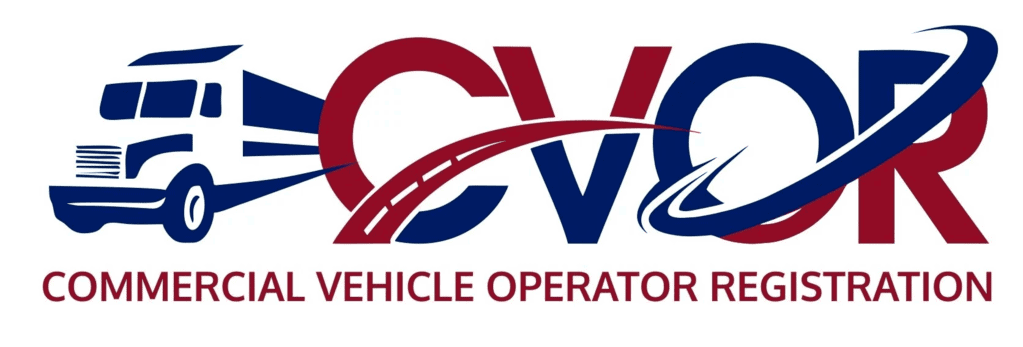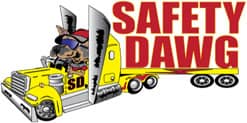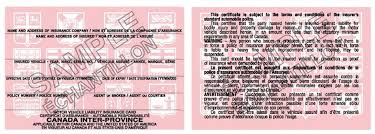How Do I Get A CVOR In Ontario?
Getting a CVOR Certificate in Ontario is as easy as 1, 2, 3. First, let us start with…
What is CVOR?
CVOR Ontario stands for Commercial Vehicle Operator’s Registration. The Highway Traffic Act Transportation tells us that if you use a truck for commercial purposes and the registered gross weight is more than 4500 kilograms, you will require a CVOR Certificate. In other words, if you or your company are going to operate commercial motor vehicles.

CVOR is a Scoring System
Your CVOR is similar to your personal driver’s licence. Suppose you get convicted of Highway Traffic Act violations while driving a car. In that case, points may accumulate on your private driver’s licence. Your CVOR Certificate is similar. You or your drivers can add points to your CVOR (points are bad). The CVOR system measurement of your safety performance. If your safety performance is poor, the MTO will intervene, and your safety rating may change. Your safety rating can affect you in many ways. Most insurance companies that insure CVOR holders monitor the CVOR rating, which often affects your rates.
Who Needs a Commercial Vehicle Operators Registration (CVOR Certificate)?
Or said another way, what are commercial vehicles? What is the definition of a Commercial Motor Vehicle? The Highway Traffic Act tells us trucks used for commercial purposes with a gross weight or an actual weight over 4,500 kg. need a CVOR certificate. Please remember that if your pickup truck is towing a trailer carrying commercial cargo and the pickup and trailer combined weight is over 4500 kg, you are a commercial vehicle and also need a CVOR. Buses with a seating capacity of ten or more passengers and tow trucks – regardless of gross weight or registered gross weight, all require a Commercial Vehicle Operator’s Registration (CVOR).
Pickup trucks and trailers are a complicated subject. It is all about gross weight and actual weight. Here are more details.
Suppose your vehicle is plated in Ontario, the United States, or Mexico. In that case, you will need a CVOR certificate for operating a commercial vehicle, bus (seating ten or more passengers), or tow truck.
Now that you know if you need a CVOR, How Do I Get A CVOR In Ontario?
I said that it is as easy as 1, 2, 3.

- Complete the CVOR Application form.
- Pay your fee to the Ministry of Transportation of Ontario (MTO)
- Pass the CVOR Test.
Completing the CVOR Application Form is not a complicated process.
The easiest way to complete the application is online. This is the quickest way to achieve your goal. You can apply online if you are an incorporated company or an individual/sole proprietor.
If you are going to operate motor vehicles as a general partnership, download the application, complete the darn thing, and snail mail the application to the Ministry of Transportation of Ontario (MTO).
The first step is to decide what kind of company you will operate your commercial vehicles as incorporated, individual, or partnership. I suggest you speak to a lawyer or accountant to help you decide.
To begin, you will need to gather the necessary documentation for the application.
If you are applying as an Individual, Gather your supporting documents:
You are going to need your Ontario driver’s licence number. If you are from out of the province, you need a copy of your licence.
No licence?
Then you are going to provide one from this list,
- passport,
- Ontario Photo Card,
- Canadian Permanent Residence card (with signature),
- Canadian citizenship card with photo (issued before Feb 1, 2012), or a
- Canadian birth certificate or proof of Birth document issued by a U.S. jurisdiction.
Complete your “Consent and Authorization form.”
Lastly, think about your answers to these questions they will ask.
What is your estimated fleet size for the coming year?
What type of business are you going to operate?
Corporate Application:
- Articles of Incorporation (or the incorporation documents that your province, territory or state gave you.)
- Articles of Amalgamation, or equal
- Articles of Amendment, or equal
- Master Business Licence or equivalent (Doing Business As (DBA) certificate for U.S. operators.
You will need the Ontario driver’s licence number for each corporate officer or a copy of their licence if it is from elsewhere.
If the corporate officer doesn’t have a driver’s licence, then you need to provide one of the following:
- Ontario Photo Card,
- Canadian Permanent Residence card (with signature),
- Canadian citizenship card with photo (issued before Feb 1, 2012), or a
- Canadian birth certificate or proof of Birth document issued by a U.S. jurisdiction.
You will also need ALL of the “Corporate History Documents.”
These could be:
- Articles of Incorporation (or the incorporation documents that your province, territory or state gave you.)
- Articles of Amalgamation, or equal
- Articles of Amendment, or equal
- Master Business Licence or equivalent (Doing Business As (DBA) certificate for U.S. operators.
Complete your “Consent and Authorization form.”
Lastly, think about your answers to these questions they will ask.
What is your estimated fleet size for the coming year?
What type of business are you going to operate?
General or Joint Partnership
You will have a little more work to do. There is a maximum of TWO partners. You must complete three applications. One for each partner and one for the general/joint partnership.
You must complete all three and then either mail them to the CVOR office or fax them to the MTO.
You can download the application here.
Proof of Insurance:
You must provide proof of liability insurance coverage in Ontario under the Compulsory Automobile Insurance Act (CAIA). Any accident insurance benefits are also required to be reported.
I Got All The Documents
Once all these documents have been gathered and signed, it is time to fill out your CVOR Certificate application online or on the downloaded document.
Once you have completed your application, submit your application, and you will need to pay the fee currently at $255.
The Ministry of Transportation of Ontario (MTO) will review your application. If approved, they will send you a CVOR Test Letter. They will send you the test letter of your choice on the application. The quickest way to get your test letter is to apply online, pay the fee, and then once approved, they will email you the test letter. Canada Post or email.
This is How To Get Your CVOR
There you have it, how to start getting your CVOR. Whether you own a tractor-trailer, cube van, tow truck, or a pickup carrying commercial goods, and the actual weight or registered gross weight is more than 4500 kg, you will need a CVOR.
Why do we need a CVOR?
The reason that the Government came up with the CVOR system is to make our roads safer.

Need Help
I am not the Government. I am a solo entrepreneur. So you can email or call me. I will return your inquiry as promptly as possible. Often within the same business day. Please understand that if I’m with a client, I don’t answer my phone or answer emails, but I will get back to you within one business day.
You need a CVOR Certificate if you plan to operate a commercial vehicle. This could be a pickup truck with a registered gross weight of more than 4500 KG carrying commercial stuff. It might be a signal tow truck. Or you might be planning to operate a bus that will carry passengers, with a seating capacity for passengers of 10 or more people. You might be landscapers, electricians, handymen, last-mile delivery operators, and airport shuttle operators. For many of you, you will need a CVOR. You will need a valid CVOR certificate to operate your commercial motor vehicle in the Province of Ontario, and I have help.
Once you achieve your goal and get your CVOR, you will find that the CVOR has a Carrier Safety Rating. For more information about Safety Rating, you can check out this video.
Help with the test
If you need help preparing for the CVOR test, which I have written myself six times, you can get access to my CVOR Test Prep Bundle. This bundle includes a 100+ question practice test and has a long list of items to help you successfully start your CVOR company.
Do you need just a practice test? Just a 100+ questions test is here.



